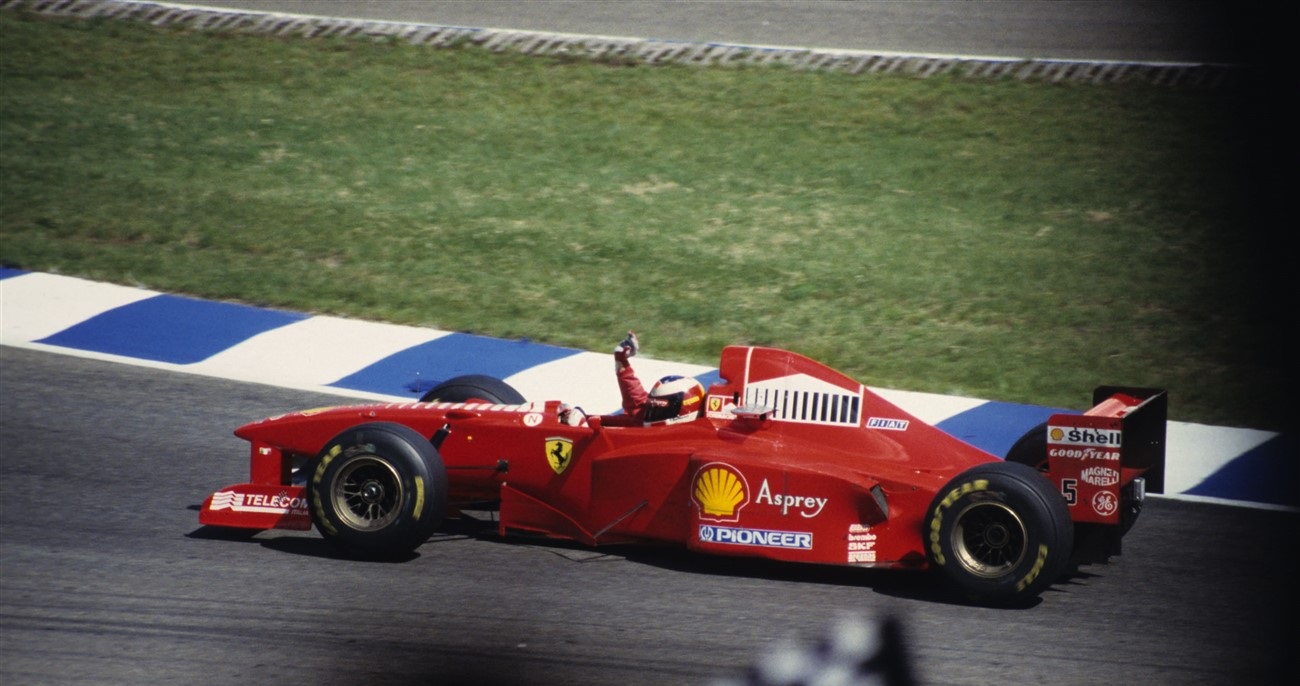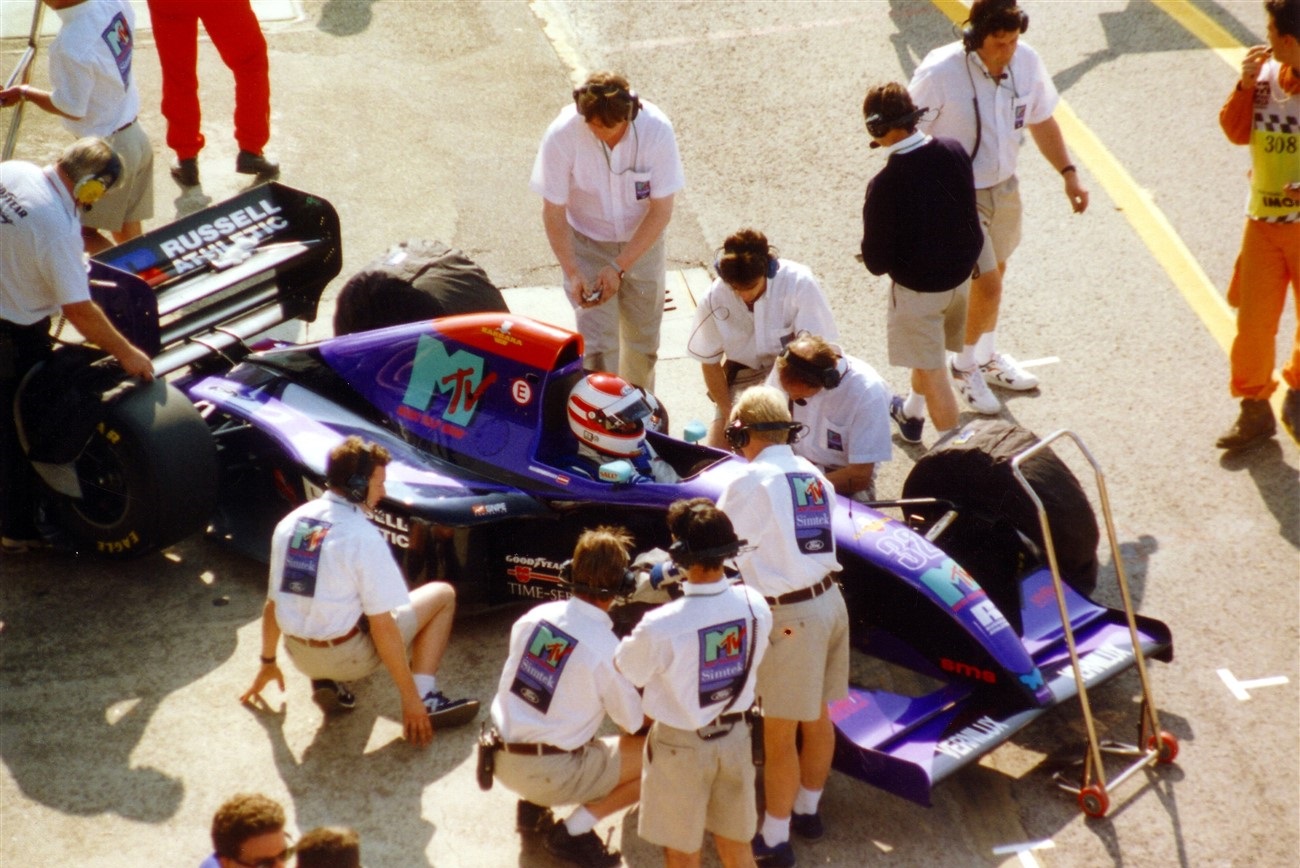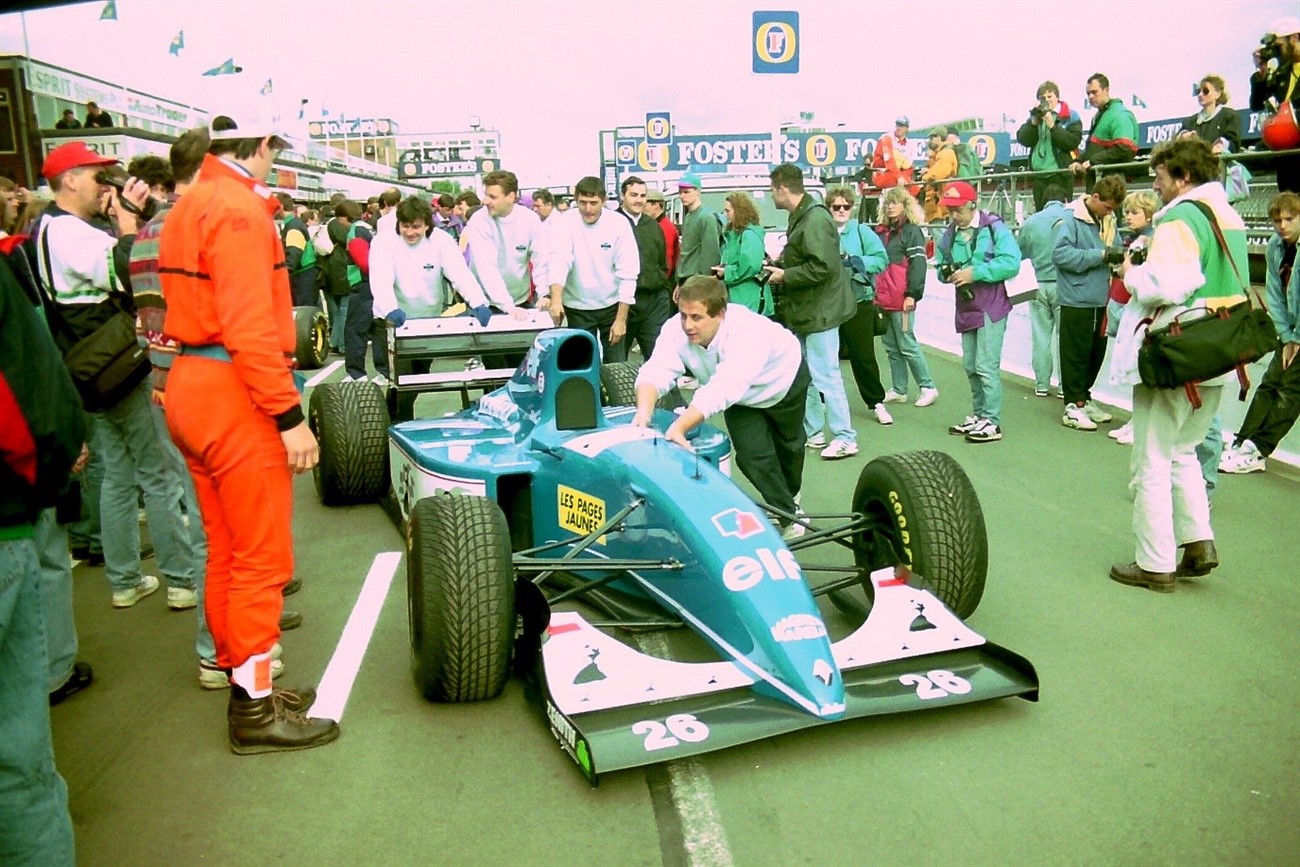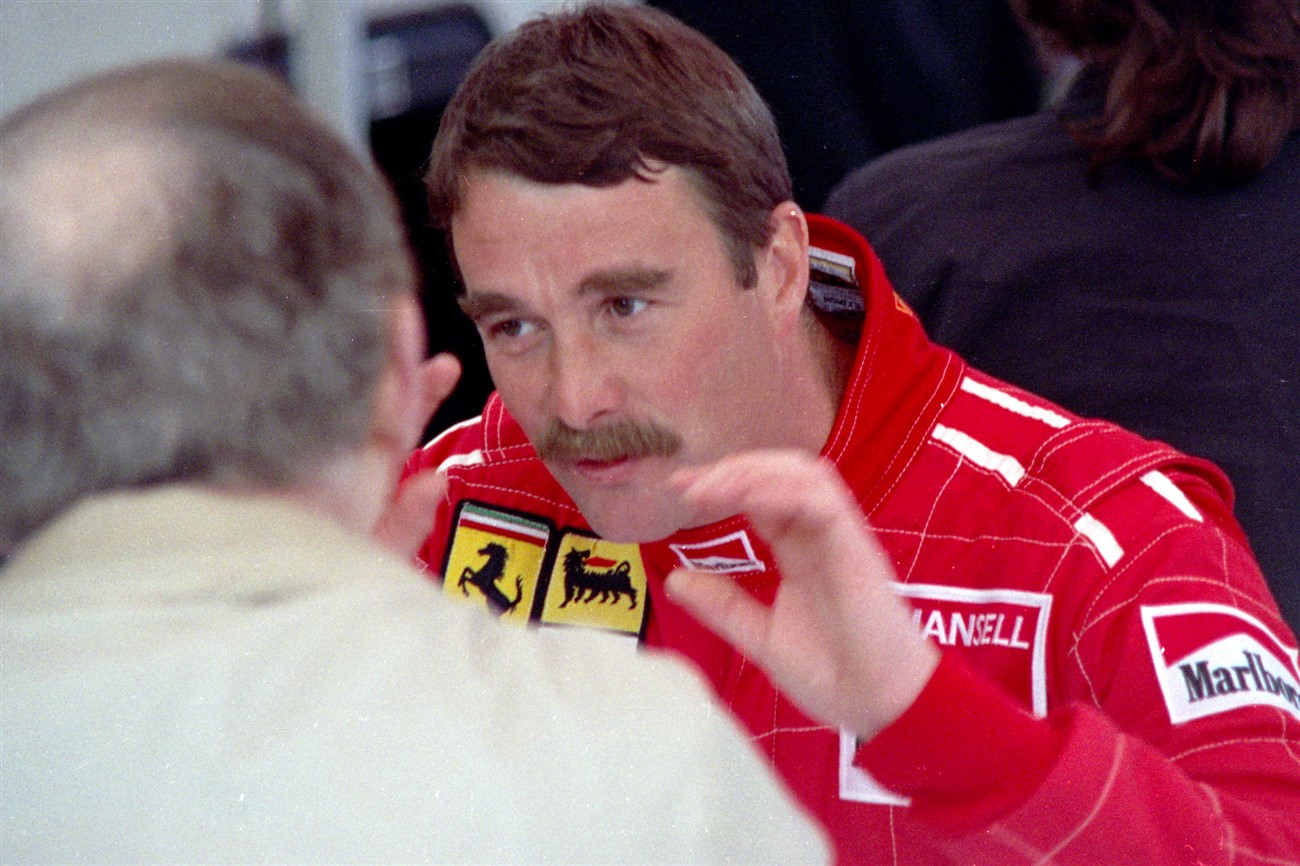In 1996 Schumacher moved to Ferrari and by 1997 key former Benetton personnel like Ross Brawn or Rory Bryne (the B194 designer), Tad Czapski (the engine electronic’s guru) joined him. Ferrari then went from being an occasional race winner to serial championship contenders over a sustained period. Questions have since been asked, why did Schumacher and his former Benetton colleagues stick together? Was it because they had sidestepped the rules in 1994 and did it subsequently at Ferrari? Dark rumours began to circulate that they somehow knew how to create an undetectable traction control implying they also may have achieved this in 1994.
When Schumacher initially arrived at Ferrari in 1996 he did work with their existing technical team. His sublime performances within a poor F310 car suggested the German’s skill didn’t solely rely on his former Benetton colleagues. This is confirmed by his then Ferrari teammate Eddie Irvine, “We were really in the shit in 1996. I remember when the car came out I said, ‘That looks worryingly different from everyone else’s car.’ It turned out everyone else was right and we were wrong”
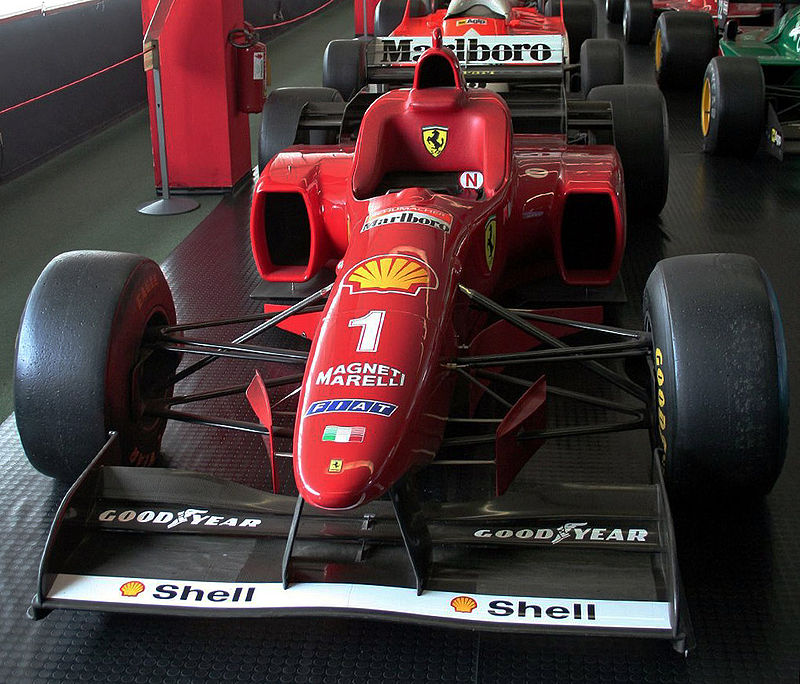
When Schumacher initially arrived at Ferrari in 1996 he did work with their existing technical team. His sublime performances within a poor F310 car suggested the German’s skill didn’t solely rely on his former Benetton colleagues. This is confirmed by his then Ferrari teammate Eddie Irvine, “We were really in the shit in 1996. I remember when the car came out I said, ‘That looks worryingly different from everyone else’s car.’ It turned out everyone else was right and we were wrong” Schumacher won three races in this car which impressed teammate Eddie Irvine who later admitted, “That was the year that Michael really earned his money.”[1]
Because the 1996 car was so poor and unreliable it soon became apparent Ferrari’s technical team needed restructuring and strengthening in order to become championship winners. Hence the reason Schumacher called upon his former Benetton colleagues as he knew they would sort out Ferrari’s technical woes. If Schumacher, Brawn et al used illicit methods to turn Ferrari around then one would have expected an immediate jump in performance after that took effect.
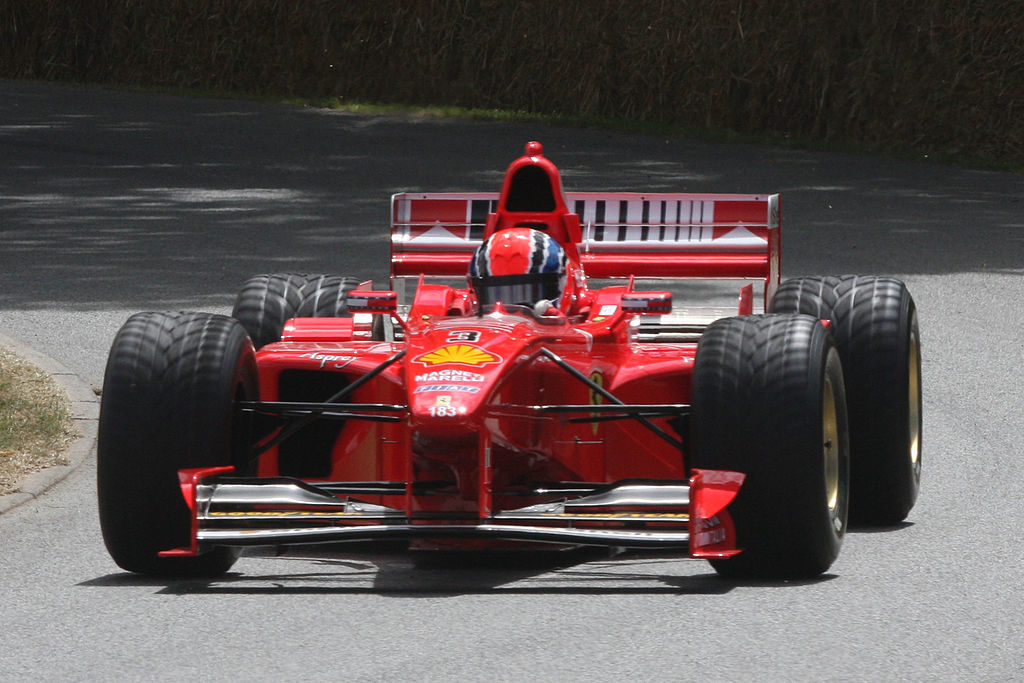
However, this did not occur instead Ferrari didn’t become the best car in F1 until 2000, thereby showing their rise was gradual and over a number of years. In addition, at Benetton, it was alleged that only Schumacher’s car was given those questionable devices but not the number 2 car. There was never this same suggestion at Ferrari even though the same senior figures were involved.
Despite this speculation continued that Schumacher and his ex-Benetton colleagues were somehow sidestepping rules at Ferrari which the 1994 F1 book touches upon. For instance, during the summer of 1998 rumours circulated that Ferrari ran illegal driver aids to help them under braking and acceleration. Ron Dennis of McLaren, Ferrari’s bitter rivals for the championship, suspected an intelligent brake-balance system so he visited Ferrari during the Austrian GP and threatened to protest if his suspicions continued. At the following race in Germany, Ferrari then performed poorly leading to suggestions they had removed their system after McLaren’s actions.
Max Mosley felt inclined to dismiss these suggestions “I know McLaren talks about that. There are interesting things at Ferrari, yet nothing illegal. I believe McLaren has understood that and is well on the way to finding an equivalent system.”[1] Ross Brawn added; “It’s just bullshit. You can’t defend yourself against an accusation like that, so it’s a very nasty, malicious thing to say. If someone says you have a fantastic system that no one can detect, how can you prove them wrong? We are one of the few teams that have our software scrutineered before we actually use it. So we are very sure, and the FIA is very sure, that our software is completely legal.”[2]
For whatever reason Germany proved an exception as Ferrari was competitive again for the rest of the season. At the next race, Hungary, Dennis tried to defuse the situation; “Anyone can rerun the tapes from Austria and you can see the wrong wheels are locking up into the corners – it’s not the unloaded wheel that’s locking up, but the loaded one. We believe that now there has been either an optimisation of the system – or something has changed – because now there’s every reason to believe that the system is in accordance with the regulations. And to substantiate that view we have over the past four weeks, asked many questions of the FIA and sought clarification”[1].
All this mudslinging had come months after Ferrari successfully protested against McLaren’s braking system which allowed drivers to apply the brakes on the rear wheels independently thereby assisting both turn in and traction. Dennis was livid how his system had been declared illegal following Ferrari’s protest in early 1998 at a time McLaren was dominating races, whereas the system had been allowed in late 1997 when McLaren wasn’t as competitive. Perhaps Dennis’ main motivation for threating Ferrari later that summer was payback. In the end, McLaren didn’t protest against Ferrari nor did anyone else, so whatever devices the Italian team were running in 1998 was deemed legal.
During that year many decisions went in Ferrari’s favor, which was convenient for TV viewers given the championships standings at the time. Dennis might feel had Ferrari’s devices been on the McLaren the outcome may have been different. In any case, it boils down to how rules were interpreted so one could not call any Ferrari devices cheating, for the same reason one cannot call McLaren’s braking system in 1998 cheating either. Essentially both teams invented clever new technologies which were not previously legislated for. So F1 rules needed to be clarified as these new devices appeared, similar to how English law is constantly updated following judgements.
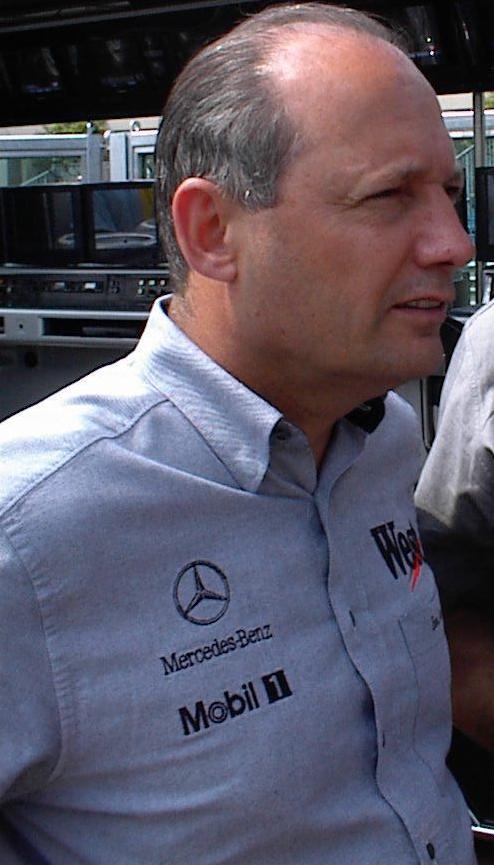
During 1998 teams were experimented with throttle maps, and other devices to emulate traction control within the interpretation of the rules. Dennis admitted “Ferrari seems to be doing quite a good job of it”[1] but didn’t actually suggest their system was illegal. Nevertheless, dark rumours continued into the early 2000s that Schumacher and his ex-Benetton colleagues had some undetectable traction control. There were also suggestions the powers-that-be in F1 were letting them do so because of the commercial benefits of Ferrari being successful in F1. Similar to how in 1994, people suggested the same was occurring because a German world champion would help increase F1’s commercial possibilities.
1994 – The Untold Story of a Tragic and Controversial F1 Season is a new book which explains this and the various controversies, politics and cheating accusations from that year. To order and view a free sample of the book visit: https://www.performancepublishing.co.uk/1994-the-untold-story-of-a-tragic-and-controversial-f1-season.html. Alternatively, you can purchase an audiobook verison here: https://www.audiobooks.co.uk/audiobook/1994-the-untold-story-of-a-tragic-and-controversial-f1-season/380646#
Images courtesy; of tonylanciabeta, Tristram Biggs and Brian Snelson via https://commons.wikimedia.org/wiki/Main_Page
[1] Source; Autosport 6/8/1998
[2] Source; Autosport 20/8/1998

